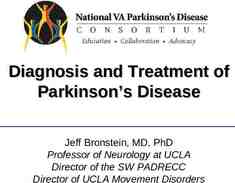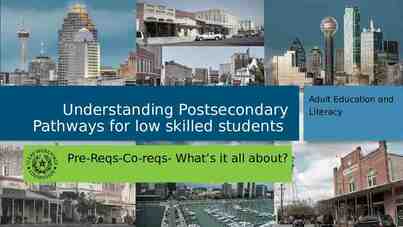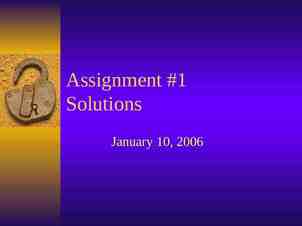Using lean to teach the technical services value stream: an
45 Slides2.26 MB

Using lean to teach the technical services value stream: an online continuing education course Tamera Hanken Director, Logistics & Resource Distribution Services UNLV Libraries 9th Northumbria International Conference on Performance Measurement in Libraries and Information Services -- Providing Value in Challenging Times August 22-26, 2011 1

LEAN According to the Lean Enterprise Institute’s Website, “The core idea [of Lean] is to maximize customer value while minimizing waste. Simply, lean means creating more value for customers with less resources” (2010). “A value stream represents all the things we do to create value for the customer. The first principle of lean thinking relates to customer value The second principle of lean thinking is that we always work by the value stream” – Maskell & Baggaley (2004) 2

Lean Principles Identify steps in the process that add customer defined value Identify waste in transportation, wait, overproduction, defect, inventory, motion, or extra processing Eliminate the steps in the process that don’t add value or are unnecessary Make sure the steps flow in an efficient sequence Establish pull, i.e., make sure the steps in the sequence don’t create bottlenecks Continue to improve the process 3

Education and Training MLS from Texas Woman’s University (1998) Graduate Certificate in Supply Chain Management/Logistics from University of Alaska (2010) – Lean Operations MPA from Troy University (2011) Certificate in Operational Excellence (2011) RESOLVING A LONG-TIME LIBRARY TECHNICAL SERVICES PROCESS PROBLEM USING LEAN, LOGISTICS, AND A LITTLE SUPPLY CHAIN MANAGEMENT (A PARADIGM SHIFT) By Tamera Hanken LOGISTICS A609 SUPPLY CHAIN QUALITY CAPSTONE PROFESSOR OLIVER HEDGEPETH 4

Technical Services Work Environments Director of Logistics & Information Distribution Services (Technical Services) -- UNLV Manager of Library Operations & Technology -- Tacoma Community College Assistant Director of Support Services -- Mid-Columbia Library District TechPro Supervisor at OCLC, Inc. Technical Services Librarian -- American University of Sharjah Senior Librarian -- Washington State Librarian Adjunct Library Technician Instructor -- Highline Community College 5

Frustrations Backlogs, blame, black holes – Bibliographic chicken3 & the MARC Record Marketplace, 20091 Rules, regulations, traditions – Crisis in Cataloging4 (1941) Mystery procedures and practices 6

Solutions Outsource, automate, mandate Implement business practices! TQM, Lean, Six Sigma, Continuous Improvement Eliminate the department Hire new staff or new leadership 7

Reframing the old problems Supply Chain Management – Book industry supply chain – The Library’s focal supply chain Logistics – Inventory management Lean – From Ranganathan to the Toyota Production System 8

The course Overview The course reconsiders technical services functions with a focus on continuous improvement. Achieved through application of lean techniques and statistical tools to help staff build competencies in the areas of adaptability, customer service, critical thinking and problem solving. An important outcome of the course is staff acquiring the ability to articulate and demonstrate how the processes in technical services create the value stream libraries depend on to deliver quality services and achieve the organizational values stated in their mission statements. Audience Format/Structure 9

The course 1. The role and value of technical services 2. Technical services within the information supply chain 3. Logistics of technical services 4. Introduction to lean 5. Process mapping 1 6. Metrics and Measurement 7. Process mapping 2 8. Quality at the source/Root cause analysis 9. Process mapping 3 Redesign 10. The technical services value stream 10

Unit 1: The role and value of Technical Services Objective – Articulate and demonstrate through the use of process data how technical services functions help a library achieve its role, vision and mission Discussion – Making the value connection References, readings: 1-4 Case assignment: choose process & describe how outcomes support library mission, initiatives, goals 11

Unit 2: Technical Services within the Information Supply Chain Objectives – Describe the information supply chain and the role of the library and of technical services within the overall supply chain – Identify the various customers and stakeholders within the supply chain 12

Unit 2: Technical Services within the Information Supply Chain Discussion – External and internal supply chains References, readings: 5-9 Case assignments – Create a library supply chain map that depicts the supply chain (or value stream) of your library – Identify and describe the customers and suppliers involved with your process, internal and external – Begin a routine of ‘walking the process’, observe and ask questions 13

14

Unit 2: The Go See Who -- anyone Where – start at the begin/end of supply chain and follow the process When – one day per week What – focus on a topic Why – visible continuous improvement 15

Unit 3: Logistics of Technical Services Objectives – Understand the various logistical concepts that relate to technical services: types of inventory, (JIT, JIC), Work in Process – How to utilize logistics to describe, quantify, and measure inventories Discussion – Types of inventory – Inventory as indicator of organizational culture – References, readings: 10-11 Case assignment—identify and describe the inventory your process manages 16

Unit 4: Introduction to Lean Objectives – Learn the similarities and differences of some of the more common process improvement methods, I.e., Lean, Six Sigma, Total Quality Management – Knowledge of Lean principles, tools & techniques and use of to diagnose problems Seven wastes, process mapping, customer report card, traveler, visual management, value stream management – Recognize lean techniques already existent in the past and current technical services 17

Lean Tools Discussion – Process mapping (flow charting) – Value stream mapping – Metrics Tools to gather and – Recognition of 7 wastes – Recognition of the symptoms of a broken process References, readings: 12-18 apply Pareto charts, fishbone diagrams – Visual management – Go See (Gemba Walk) 18

Units 5-7: Mapping, Metrics and Measurement Unit 5: Process Mapping 1 Unit 6: Metrics and Measurement Unit 7: Process Mapping 2 Objectives – Learn and apply the techniques and stages of process mapping Macro, Functional-Activity, Task-Procedure, Value Stream Mapping – Determine the metrics that enable measurement of processes and understand the options available for gathering process related data 19

Units 5-7: Mapping, Metrics and Measurement Discussion – – – – – – Select a process and consider outcomes Identify customers (internal and external) Select team (include customers) Map the current state Implement travelers (method of data collection Implement customer report card (determine process goals) References, readings: 19-24 Case assignments: mapping and data collection 20

Units 5-7: Mapping, Metrics and Measurement First attempt, summer 2009 21

Units 5-7: Mapping, Metrics and Measurement What data will you gather about your process? – – – – – – – Processing times Lead times Batch sizes Flow rates Customer expectations Percentage Complete and Accurate Unit cost 22

Units 5-7: Mapping, Metrics and Measurement How will you gather data? – Traveler – Cycle time sheet – Go See – Customer Report Card – ILS reports 23

Units 5-7: Mapping, Metrics and Measurement 24

25

Units 5-7: Mapping, Metrics and Measurement Second attempt, fall 2009 26

27

28

Unit 8: Quality at the Source/Root Cause Analysis Objectives – Redesign a process based on lean process design principles – Calculate process data to benchmark and continuously improve – Use advanced lean techniques to address process problems 29

Unit 8: Quality at the Source/Root Cause Analysis Discussion Lean Analysis Techniques: The ‘5-whys’, a series of questions to get to the root cause of the problem Fishbone (Ishikawa) diagram as a method of illustrating cause and effect Pareto chart (80/20) to help review which few factors are causing most of the problems References, readings: 25 30

Unit 8: Quality at the Source/Root Cause Analysis Nancy Kress & Team 31

Unit 9: Process Mapping 3, Redesign Objectives – Redesign a process based on lean process redesign principles – Calculate process data to benchmark and continuously improve – Use advanced lean techniques to address process problems 32

Unit 9: Process Mapping 3, Redesign Discussion Redesign principles best suited to improve work structure: – – – – – – – – Design the process around the value-adding activities Work is performed where it makes the most sense Reduce waiting, moving, and rework time Perform process steps in their natural order Reduce checks and reviews Push decision making down to the lowest reasonable level Build quality in to reduce inspection and rework Simplify steps References, readings: 26 Case assignment: redesign the process using the design principles 33

34

Unit 10: The Technical Services Value Stream Objective – Create a value stream map that illustrates the sum calculation of all related/integrated processes – Understand the concept of value stream management and the framework that links technical services process goals to the goals, mission, and vision of the library and/or larger organization. – An awareness of the different performance measurements for a single process versus the overall value stream 35

Unit 10: The Technical Services Value Stream Discussion To answer performance measurement questions, metrics are established at the single process level and at the value stream level (sum of all related processes) to monitor the effectiveness of the value stream(s) in achieving organizational initiatives and related goals. At the single process level the metrics are monitored daily to meet current demand or process goals At the value stream level metrics are monitored less frequently, but routinely and gauge progress towards larger organizational initiatives 36

Unit 10: The Technical Services Value Stream Discussion – List strategic objectives or goals that relate to selected value stream – Define critical success factors within the value stream that are related to the goals (what must we be good at to achieve goals) – Define goals of the value stream – Create list of performance measurements that support the goals (purpose: continuous improvement) References, readings: 27 37

Questions? [email protected] 38

Units 1-10: Discussion References Unit 1 1. Fischer, R. & Lugg, R. (2009). Study of the North American MARC records marketplace: October 2009. Washington, DC: Library of Congress 2. Fischer, R., Lugg, R, & Boese, K.C. (2004). Cataloging: How to take a business approach. The Bottom Line: Managing Library Finances 17 (2), 50-54. 3. Howarth, L.C., Moor, L., & Sze, E. (2010). Mountains to molehills: The Past, present, and future of cataloging backlogs. Cataloging & Classification Quarterly, 48, 423-444. DOI: 10.1080/01639371003767227 4. Osborn, A. (1941). Crisis in cataloging. The Library Quarterly, 11 (4), 393-411. 39

Units 1-10: Discussion References Unit 2 5. Cope, B. (2001). Making and moving books in new ways, from the creator to the consumer. In. B. Cope & D. Mason (Eds.), Digital Book Production and Supply Chain Management (pp. 1-20). Altona, VC: Common Ground Publishing. 6. Dugan, Rr.E., Hernon, P., Nitecki, D. (2009). Viewing library metrics from different perspectives: Inputs, outputs, and outcomes FINISH [ch.3] 7. Goldsby, T.J. & Martichenko. (2005). Lean Six Sigma Logistics. Boca Raton, FL: Ross Publishing, Inc. [Chapter2] 8. Porter, M. (1985). The Value chain and competitive advantage. In D. Barnes (Ed.), Understanding Business: Processes (pp. 50-68). London, UK: Routledge. 9. Rogers, Dale S., & Tibben-Lembke, Ronald S. 1998. Going Backwards: Reverse Logistics Trends and Practices. Reno, NV: University of Nevada, Reno, Center for Logistics Management. 40

Units 1-10: Discussion References Unit 3 10. Goldsby, T.J. & Martichenko. (2005). Lean Six Sigma Logistics. Boca Raton, FL: Ross Publishing, Inc. [Chapters 210] 11. Mann, D. (2010). Creating a lean culture: Tools to sustain lean conversions. Boca Raton, FL: CRC Press [Chapter 1] Unit 4 12. Black, K. & Revere, L. (2006). Six Sigma arises from the ashes of TQM with a twist. International Journal of Health Care Quality Assurance. 19 (3). 259-266. 13. Dragon, P. & Sheets Baricella, L. (2006). Assessment of technical services workflow in an academic library: A Time path study. Technical Services Quarterly, 23 (4), 1-15. 41

Units 1-10: Discussion References Unit 4 14. Kumi, S. & Morrow, J. (2006). Improving self service the Six Sigma way at Newcastle University Library. Program: Electronic Library and Information System, 40 (2), 123-136. 15. Palmer, L.A. & Ingrassia, B.C. (2005), Utilizing the power of continuous improvement in technical services. Journal of Hospital Librarianship, 5 (3), 93-98. 16. Phipps, S.E. (2004). The System design approach to organizational development. The University of Arizona model. Library Trends, 53 (1), 68-111. 17. Smith, G. (2001). Aiming for continuous improvement: Performance measurement in a re-engineered technical services. Library, Collection, Acquisitions & Technical Services 25, 81-92. 18. Voyles, J.F., Dols, L. & Knight, E. (2009). Interlibrary loan meets Six Sigma: The University of Arizona Library’s success applying process improvement. Journal of Interlibrary Loan. 19 (1), 75-94. 42

Units 1-10: Discussion References Unit 5 19. Madison, D. (2005). Process Mapping, Process Improvement, and Chico, CA: Baton Professional. [Chapters 2-8] Process Management: A Practical Guide to Enhancing Work and Information Flow. Process Management: A Practical Guide to Enhancing Work and Information Flow. Proven method for measuring and managing the lean enterprise. New York, NY: Unit 6 20. Madison, D. (2005). Process Mapping, Process Improvement, and Chico, CA: Baton Professional. [Chapters 2-8] 21. Maskell, B. & Baggaley, B. (2004). Practical lean accounting: A Productivity Press. [Chapters 3, 7-8] 22. Voyles, J.F., Dols, L. & Knight, E. (2009). Interlibrary loan meets Six Journal of Interlibrary Loan. 19 (1), 75-94 Sigma: The University of Arizona Library’s success applying process improvement. 43

Units 1-10: Discussion References Unit 6 23. Duga, R.E., Hernon, P. & Nitecki, D.A. (2009). Viewing library metrics from different perspectives: Inputs, outputs, and outcomes. Santa Barbara, CA: Libraries Unlimited [Chapters 1-7] Unit 7 24. Madison, D. (2005). Process Mapping, Process Improvement, and Information Flow. Chico, CA: Baton Professional. [Chapters 2-8] Process Management: A Practical Guide to Enhancing Work and 44

Units 1-10: Discussion References Unit 8 25. Madison, D. (2005). Process Mapping, Process Improvement, and Chico, CA: Baton Professional. [Chapter 7] Process Management: A Practical Guide to Enhancing Work and Information Flow. Process Management: A Practical Guide to Enhancing Work and Information Flow. Unit 9 26. Madison, D. (2005). Process Mapping, Process Improvement, and Chico, CA: Baton Professional. [Chapters 9-12] Unit 10 27. Maskell, B. & Baggaley, B. (2004). Practical lean accounting: A Proven method for measuring and managing the lean enterprise. Press. [Chapters 3, 7-8, 19] New York, NY: Productivity 45






